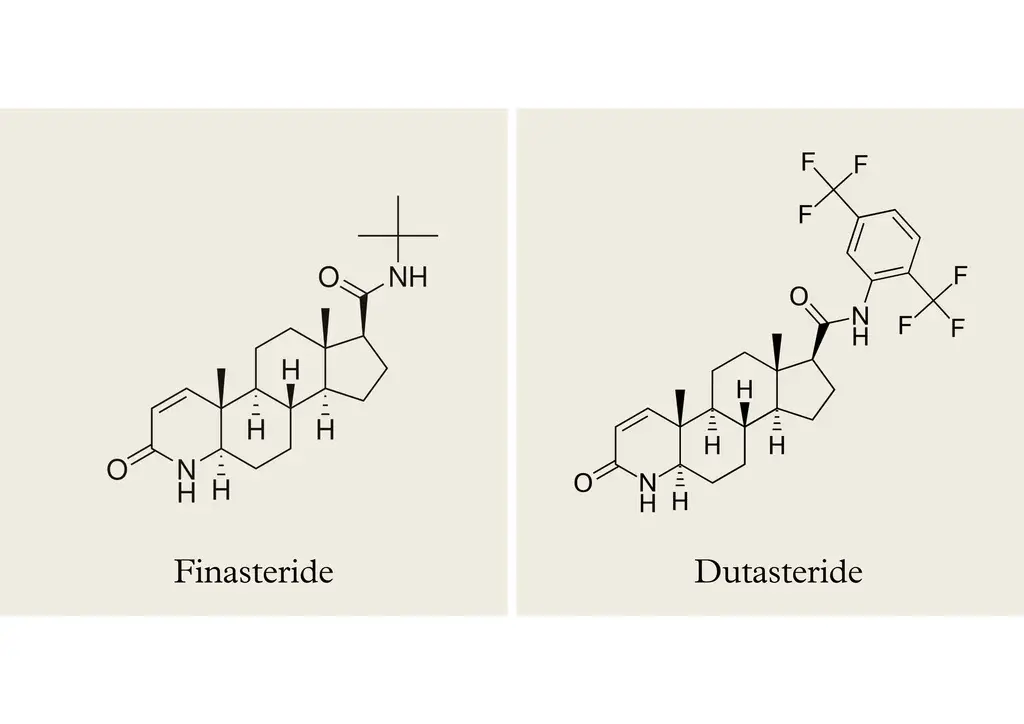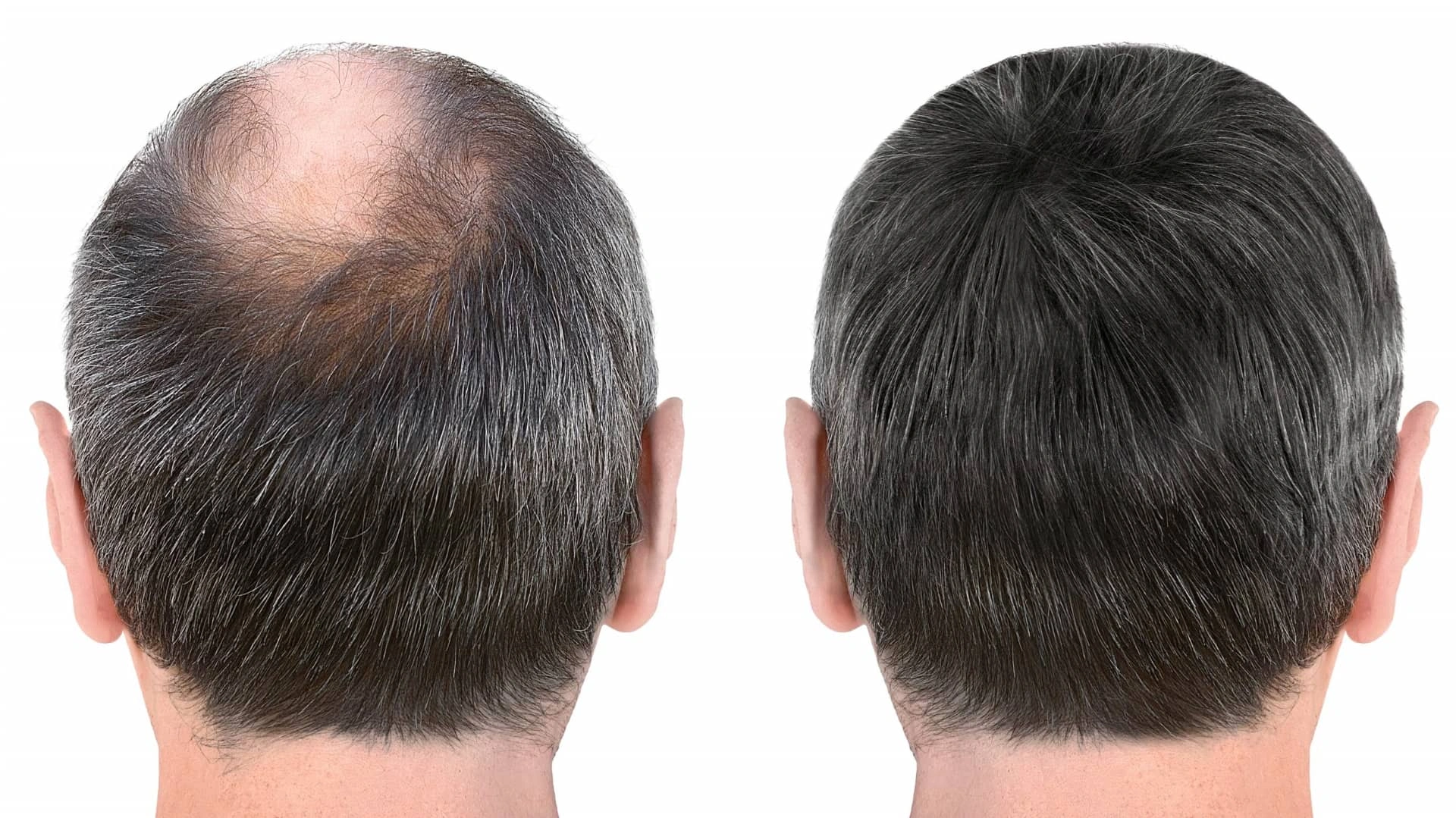Dutasteride vs Finasteride In Malaysia
Hair loss is a common concern affecting millions of people worldwide. Among the popular medical treatments available, dutasteride and finasteride stand out as effective options. But which one is better to use it along with minoxidil?
What Are Dutasteride and Finasteride?

Both dutasteride and finasteride belong to a class of medications called 5-alpha-reductase inhibitors. These drugs help treat androgenetic alopecia (commonly known as male pattern baldness) by blocking the conversion of testosterone to dihydrotestosterone (DHT), a hormone responsible for hair follicle shrinkage.
-
Dutasteride inhibits both type 1 and type 2 5-alpha-reductase enzymes.
-
Finasteride selectively inhibits only type 2 5-alpha-reductase.
This key difference influences their effectiveness and side effect profiles.
How Does Dutasteride Work?
Dutasteride reduces DHT levels in the scalp and bloodstream by blocking both enzyme types responsible for converting testosterone. This leads to a more significant reduction of DHT, which is directly linked to hair thinning and loss.
-
Effectiveness: Studies show dutasteride can reduce DHT levels by up to 90%, offering strong potential for hair regrowth.
-
Usage: Typically prescribed for benign prostatic hyperplasia (BPH), dutasteride is increasingly used off-label for hair loss.
How Does Finasteride Work?
Finasteride blocks type 2 5-alpha-reductase, decreasing DHT levels by approximately 70%. It is FDA-approved specifically for male pattern baldness and has been a first-line treatment for decades.
-
Effectiveness: Slows hair loss and promotes regrowth in many men.
-
Usage: Commonly prescribed at 1 mg daily for hair loss.
Dutasteride vs Finasteride: What’s The Differences?
| Feature | Dutasteride | Finasteride |
|---|---|---|
| Enzyme Inhibition | Type 1 & 2 5-alpha-reductase | Type 2 5-alpha-reductase only |
| DHT Reduction | Up to 90% reduction | Around 70% reduction |
| FDA Approval | Approved for BPH, off-label for hair loss | Approved for male pattern baldness |
| Onset of Action | Faster, noticeable results in ~3 months | Slower, 6-12 months |
| Half-life | 4-5 weeks | 5-6 hours |
| Side Effects | Similar but potentially more intense | Well-studied, fewer severe cases |
Benefits of Dutasteride vs Finasteride

Dutasteride Benefits
-
More potent DHT suppression
-
Faster and potentially more significant hair regrowth
-
Effective for patients unresponsive to finasteride
Finasteride Benefits
-
Established safety profile
-
FDA-approved specifically for hair loss
-
Well-tolerated with fewer reported side effects
Potential Side Effects and Risks of Dutasteride vs Finasteride?
Both medications share similar side effects due to their hormonal action:
-
Decreased libido
-
Erectile dysfunction
-
Ejaculation disorders
-
Possible mood changes
Dutasteride may carry a slightly higher risk due to its stronger DHT suppression. It’s crucial to consult with a healthcare provider before starting either treatment.
How to Choose Between Dutasteride vs Finasteride?
Choosing between the two depends on several factors:
-
Severity of hair loss: Dutasteride may be better for advanced cases.
-
Previous treatment response: Those who don’t respond to finasteride might benefit from dutasteride.
-
Tolerance to side effects: Finasteride may be preferable for those sensitive to hormonal changes.
-
Doctor’s recommendation: Always prioritize professional advice.
FAQs About Dutasteride vs Finasteride
1. Can women use dutasteride or finasteride for hair loss?
Both medications are typically not recommended for women, especially during pregnancy, due to potential risks to the fetus.
2. How long does it take to see results from dutasteride or finasteride?
Finasteride usually takes 6-12 months, while dutasteride may show results as early as 3 months.
3. Are the side effects of dutasteride worse than finasteride?
Dutasteride’s stronger action may increase side effect risk, but individual experiences vary.
4. Can I switch from finasteride to dutasteride?
Yes, many patients switch if finasteride is ineffective, but this should be done under medical supervision.
5. Is it safe to use these medications long-term?
Long-term use is generally safe but requires monitoring by a healthcare professional.
Conclusion: Dutasteride vs Finasteride – Which is Right for You?
Both dutasteride and finasteride are effective treatments for androgenetic alopecia, with distinct advantages and considerations. Dutasteride offers stronger DHT suppression and faster results but may have increased side effects. Finasteride remains the standard treatment due to its proven safety and efficacy.
For those considering more permanent solutions, combining these medications with a hair transplant can enhance overall results by preventing further hair loss while restoring hair density.
Ultimately, the best choice depends on your individual needs, health profile, and doctor’s advice. By understanding the differences and benefits, you can make a more informed decision for your hair loss journey.
